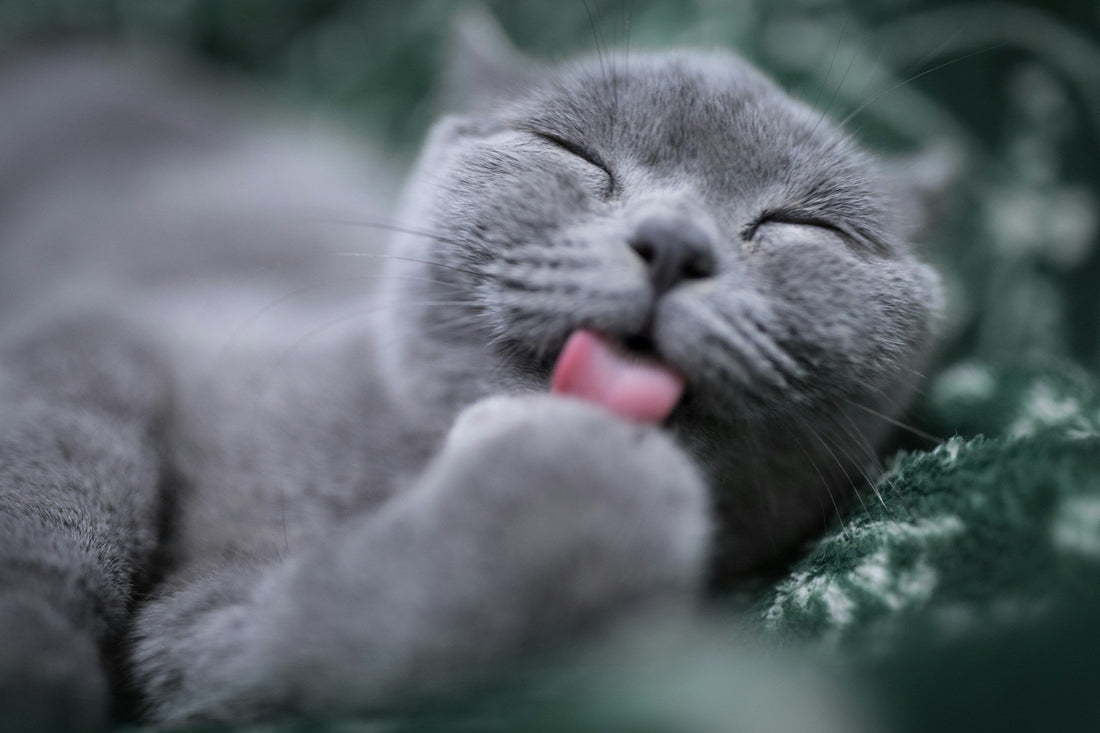What Exactly Is a Hairball (and Why Does It Always Land on the Rug?)
Let’s start with the basics: hairballs — or trichobezoars, if we’re getting sciencey — are clumps of undigested fur your cat swallows while grooming.
Normally, that fur passes harmlessly through the digestive system. But sometimes it clumps together and gets stuck, especially in long-haired breeds or cats that shed heavily.
And when it can’t go out the back... it comes back up the front.
Fun Fact:
Cats spend nearly 30–50% of their waking hours grooming. That’s like you spending 5 hours a day brushing your hair (and accidentally eating it).
When Should You Worry About Hairballs?
An occasional hairball is normal. But if your cat is constantly hacking, gagging, or showing signs of discomfort — it’s more than just a grooming side effect.
Signs your cat may need hairball support:
- Hairballs more than twice a month
- Vomiting without results
- Constipation or straining in the litter box
- Decreased appetite
- Lethargy or changes in behavior
- Unusual coughing or gagging
In severe cases, hairballs can cause dangerous blockages. That’s why prevention is key — not just for your carpet, but for your cat’s health and comfort.
What Causes Frequent Hairballs?
1. Heavy Shedding or Long Hair
More fur = more grooming = more swallowed hair. Long-haired breeds like Persians and Maine Coons are particularly prone.
2. Poor Digestive Motility
If your cat’s gut isn’t moving efficiently, swallowed hair is more likely to clump.
3. Lack of Fiber
Fiber helps push hair through the intestines instead of letting it build up.
4. Dry Skin & Brittle Fur
Dry, flaky skin can lead to more shedding — and more hairballs.
5. Boredom
Bored cats often overgroom, which can increase hairball risk even in short-haired breeds.
5 Proven Ways to Prevent Hairballs (That Actually Work)
1. Brush Like It’s a Ritual
Daily brushing, especially during shedding season, helps remove loose fur before your cat swallows it. Even short-haired cats benefit from regular brushing.
2. Keep That Gut Moving: Add Digestive Support
Fiber-rich ingredients like psyllium husk help sweep hair through the digestive tract. Combined with anti-inflammatory fish oil and skin-supporting nutrients, you can tackle hairballs from the inside out.
Our #1 Pick:
LEGITPET Hairball Cat Treats
These soft, delicious chews are made to reduce hairballs before they start — no sticky gels or flavorless powders required.
- Psyllium husk for gentle fiber support
- Fish oil rich in Omega-3s to improve digestion and coat health
- Biotin and zinc to promote a healthy, low-shed coat
- No corn, soy, wheat, or artificial fillers
“I used to find hairballs weekly. Now? Maybe one a month — and my cat thinks she’s getting a treat. Total win.”
3. Hydration, Hydration, Hydration
Dry food and a low water intake can slow down digestion. Try adding water to food, offering a cat fountain, or mixing in wet food to boost hydration.
4. Keep Your Cat Active
Activity keeps digestion moving and reduces boredom-related grooming. Daily play sessions (yes, even 10 minutes of chasing a string) help more than you think.
5. Support Skin & Coat Health
A healthy coat means less shedding. Look for supplements with omega-3, biotin, and zinc to reduce dry skin and flaky fur.
When to Call Your Vet
Don’t wait if your cat shows signs of:
- Ongoing vomiting or retching without producing a hairball
- Lethargy and loss of appetite
- Constipation or bloating
- Any signs of pain or distress
Hairballs can cause intestinal blockages, especially in cats who groom excessively or already have gut issues. If in doubt — get it checked out.
Final Thoughts: The Best Hairball Is the One That Never Happens
Hairballs may be part of cat life, but they don’t have to be frequent — or messy. With the right grooming habits, hydration, and gentle nutritional support, you can help your cat feel (and look) better.
Try LEGITPET Hairball Cat Treats
Easy to give, gentle on digestion, and proven to help reduce hairballs naturally.

